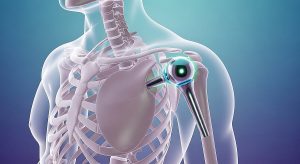Anaphylaxis involves a sudden, potentially life-threatening reaction to an allergen, including even very small amounts of food allergens such as egg or peanut.
Now, two studies find that people with allergies, as well as those charged with their care, are often unsure what to do when anaphylaxis strikes, and how soon.
Too often, patients were hesitant to get emergency help when needed, and another study found protocols for EMS crews responding to anaphylaxis varied widely from state to state.
“Many EMS anaphylaxis protocols are incomplete and/or outdated,” said Dr. Carly Gunderson, who led the EMS study. “The discrepancies include variations in the definition of anaphylaxis as well as in treatment.”
Gunderson is an allergy and immunology specialist at Memorial Healthcare System in Fort Lauderdale, Fla.
Both studies were presented Thursday at the annual meeting of the American College of Allergy, Asthma and Immunology (ACAAI) in Boston.
One study found that patients were often unsure of what constitutes an anaphylactic reaction, and what to do when one occurs.
That study was led by Dr. Sasha Alvarado, who co-directs quality and safety for the Division of Immunology, Allergy and Retrovirology at Baylor College of Medicine, in Houston.
“We surveyed 96 patients and caregivers in an allergy clinic waiting room to evaluate knowledge of anaphylaxis and desired components of an anaphylaxis action plan,” she explained in an ACAAI news release.
Epinephrine (the active ingredient in the EpiPen) is the go-to rescue drug for anaphylaxis, and Alvarado’s team found that 95% of those surveyed were already prescribed the drug to administer if needed.
Most (73%) said they were “comfortable” recognizing the symptoms of anaphylaxis.
However, only about 1 in 7 respondents (14%) said they would likely use epinephrine as a first-line remedy if they experienced anaphylaxis.
Why the hesitation? According to the survey, the leading reasons given were:
-
Not sure which symptoms to treat (40.6%)
-
Hesitant to go to the emergency room (24%)
-
Hesitant to call 911 (17.7%)
-
Not sure how to use epinephrine auto-injectors (11.5%)
-
Fear of needles (5.2%)
“We know early recognition of anaphylaxis and treatment with epinephrine improves outcomes,” Alvarado said. “The results demonstrate the need for better education of allergy patients to recognize and treat anaphylaxis appropriately.”
It’s not just patients that may face confusion over what to do when anaphylaxis occurs.
Gunderson’s team tracked differences across emergency medical services (EMS) in 30 states, looking especially at protocols used by EMS crews before patients were transported to a hospital.
Even the definition of anaphylaxis varied, the researchers found.
Just half of states used protocols that included gastrointestinal symptoms in the definition of anaphylaxis, and only 40% included neurologic manifestations to help identify an attack. That came as a surprise to the study authors.
As to treatment, protocols differed between states, too.
While almost all (97%) of states recommended epinephrine as first-line treatment for anaphylaxis, only 17 (57%) provided auto-injectors for use.
“Many protocols did not permit or provide epinephrine auto-injectors, despite their convenience and effectiveness,” the researchers noted.
As well, they added, “90% [27] recommended albuterol if respiratory symptoms were present, 73% [22] recommended intravenous fluids and 60% [18] recommended steroids.”
However, the study authors called the use of steroids an “outdated” recommendation.
Because these findings were presented at a medical meeting, they should be considered preliminary until published in a peer-reviewed journal.
More information
Find out more about anaphylaxis at the Cleveland Clinic.
SOURCE: American College of Allergy, Asthma and Immunology, news release, Oct. 24, 2024
Source: HealthDay
Copyright © 2025 HealthDay. All rights reserved.

















